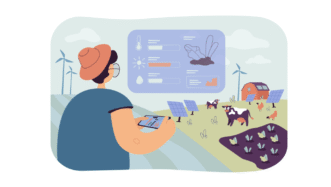LESSON OVERVIEW
In this advanced speaking lesson students will practise some vocabulary and watch a video about the history of the nuclear family. They will also discuss some statistics and talk about the changing family model.
WARM UP & VOCABULARY
At the beginning of the lesson, students try to predict the topic based on three words: blended, immediate and cohabitation. Then, they come up with a definition of the word family and compare their ideas with other students or with a provided dictionary definition. After that, students complete gaps in six sentences using the words describing families (e.g. blended, close-knit, extended). In the second vocabulary exercise of this advanced speaking lesson, students choose correct words to create fixed phrases and collocations like fertility rate, come to prominence, transactional bond. They move on to discuss whether they think the statements from the previous exercise are true for their country. The statements are related to family models and relationships.
VIDEO & DISCUSSION
The second part of the lesson starts with a video lead-in activity in which students try to predict the answers to two questions about the history of the nuclear family. Then, they watch the first part of the video and check their answers. Before watching the second part, they write down three topics which they think the video will address. They watch the video and check if they were right. The topics include: fertility and divorce rates in different parts of the world, chosen families, etc. After that, students try to finish six statements with the information they remember from the video. They watch the video again and check their answers. After the viewing part of this advanced speaking lesson, students discuss the questions related to family models and share their views on what they have learned. Finally, students look at some statistics about fertility rates, population ageing and single-parent households. They need to analyse them and discuss how family models will change in the future and what implications for society the changes will have.
WORKSHEETS
Subscribe to unlock these and many other Standalone lesson with the Premium plan
Subscribe













Hi! I love the lesson, but there’s a small mistake in slide 10: an affluent family is a wealthy one, not one that struggles to support itself. 🙂
Hi, Paula. You’re right, affluent and wealthy are synonyms, but there is no mistake in the slide. There is the word ‘less’ before ‘affluent’, so the sentence makes perfect sense 🙂
Hello!
I’m a bit struggling with the meaning of share vs fraction. Could you explain it?
Hi! ‘A share’ is a part, ‘a fraction’ is a tiny part. And to refer to the example in the lesson, ‘the share (of people living in single-parent households) is growing’ makes more sense as there is nothing pointing to that part (‘the share’) being a fraction.
Hope this helps.